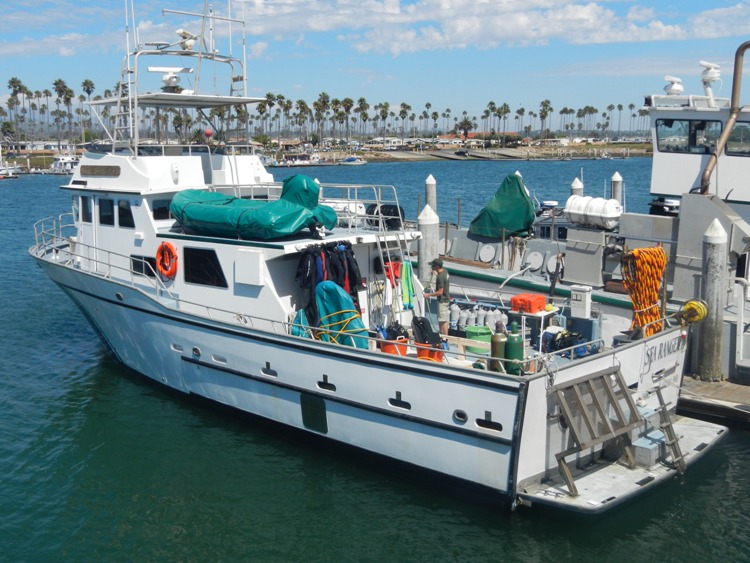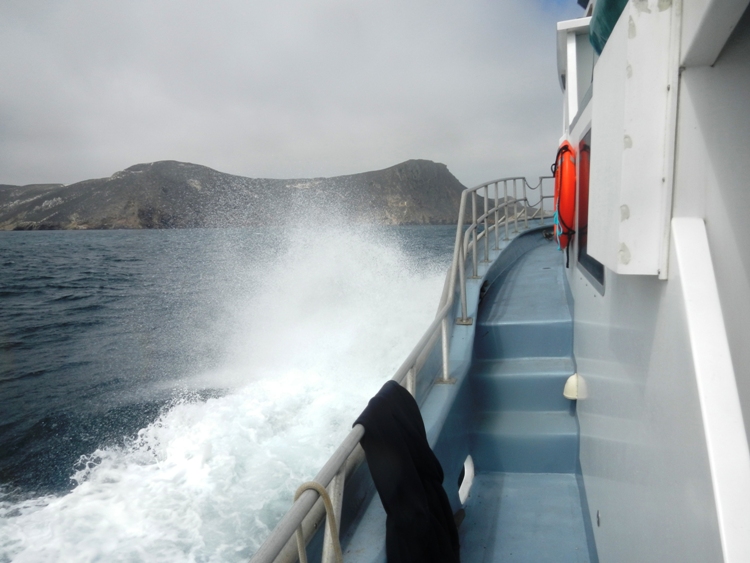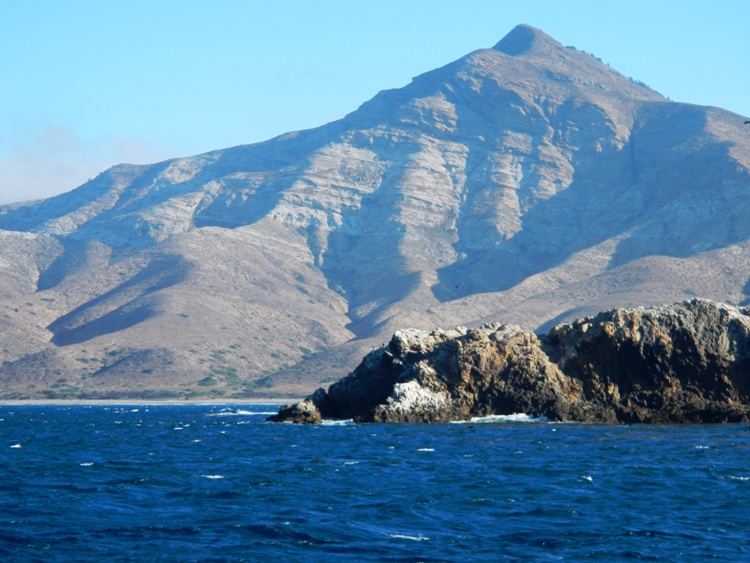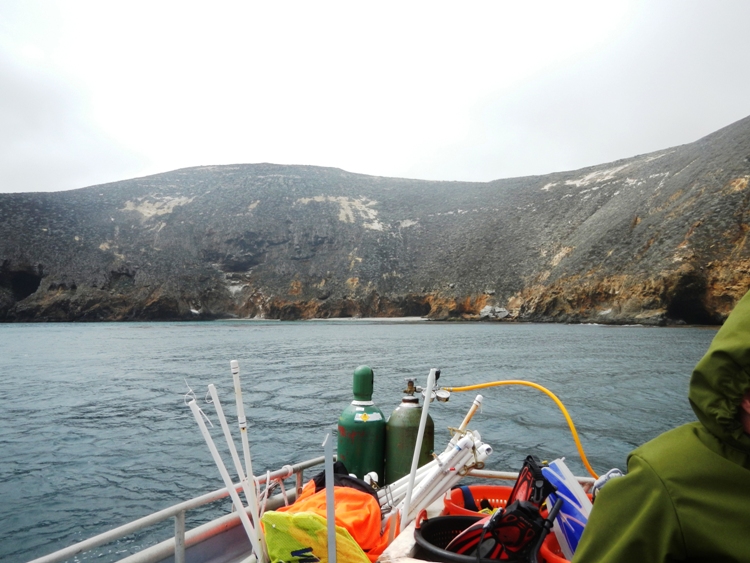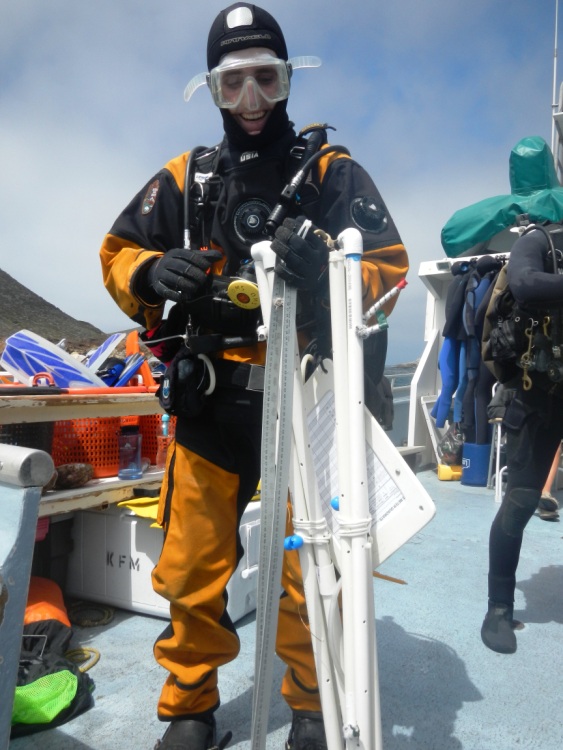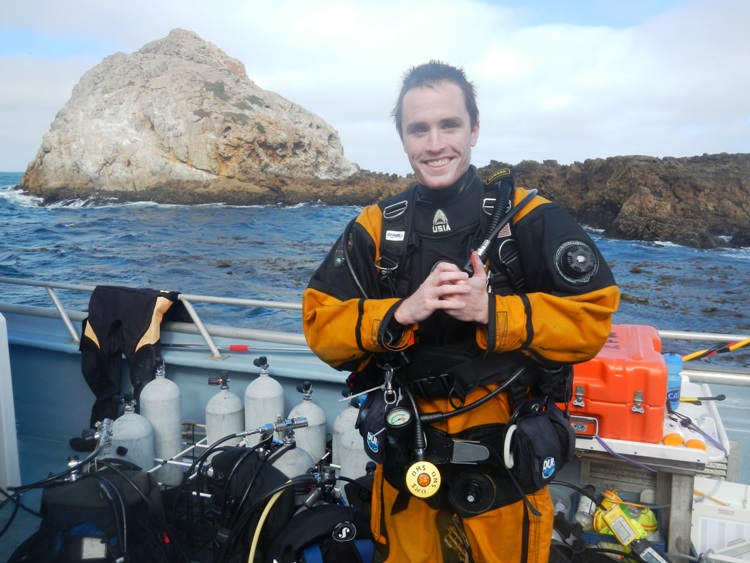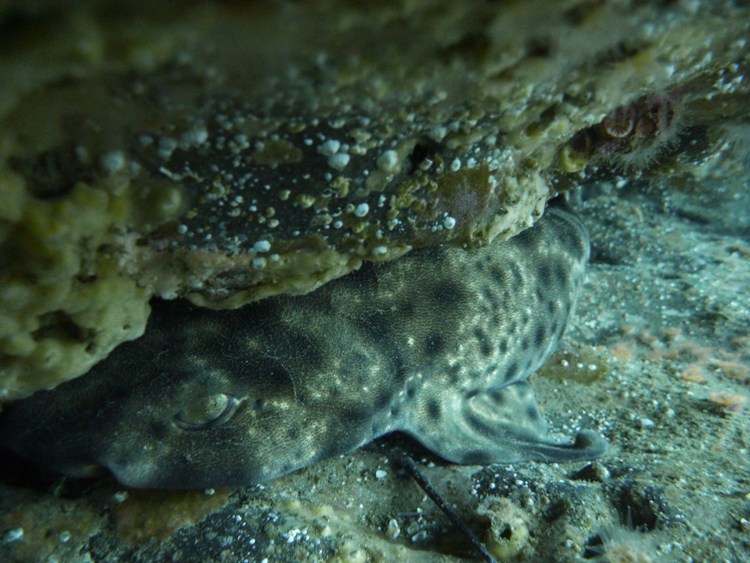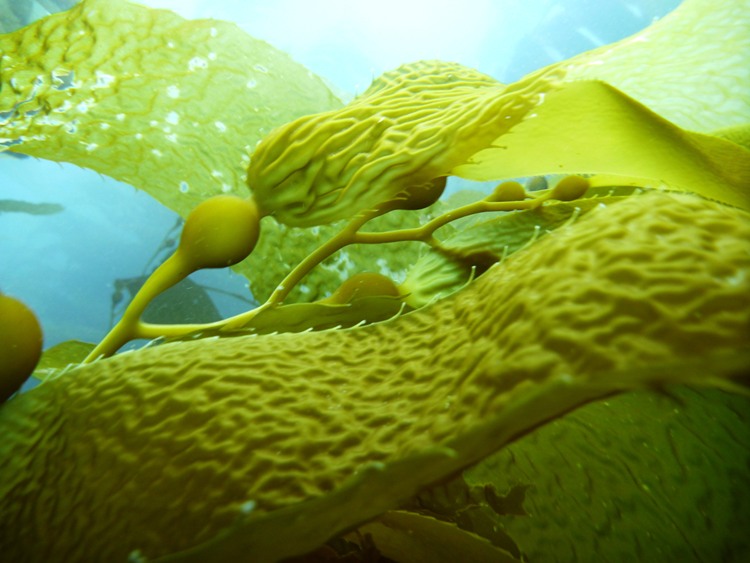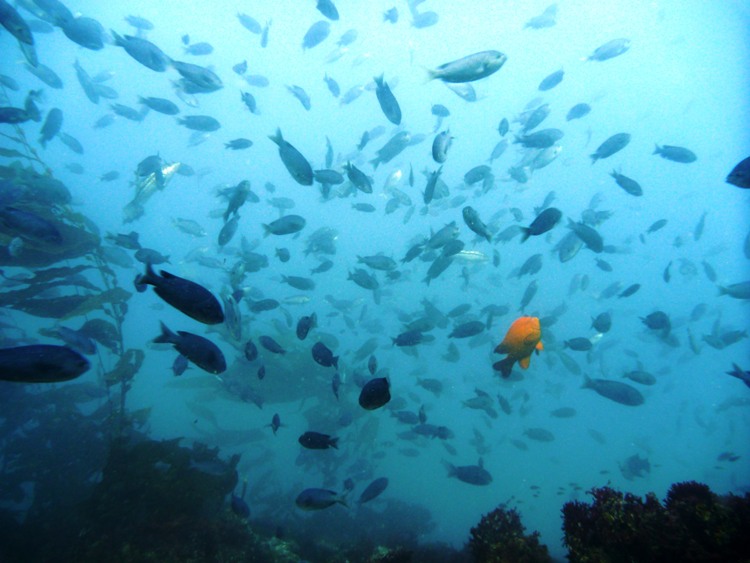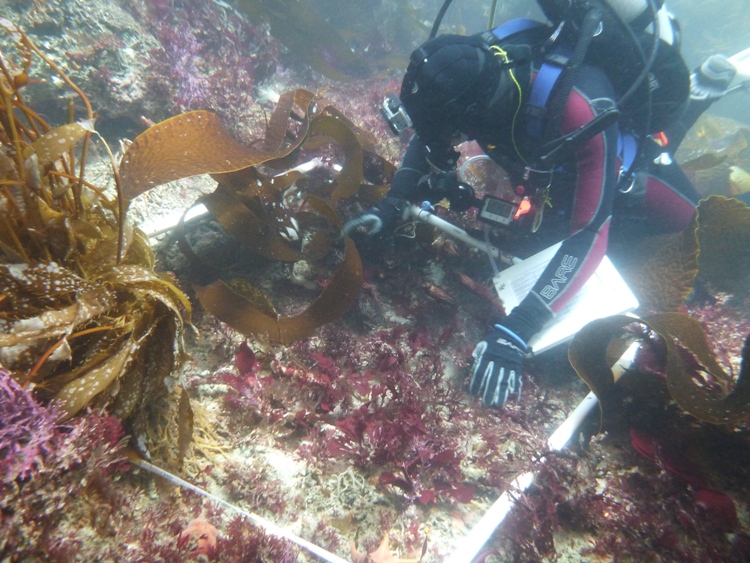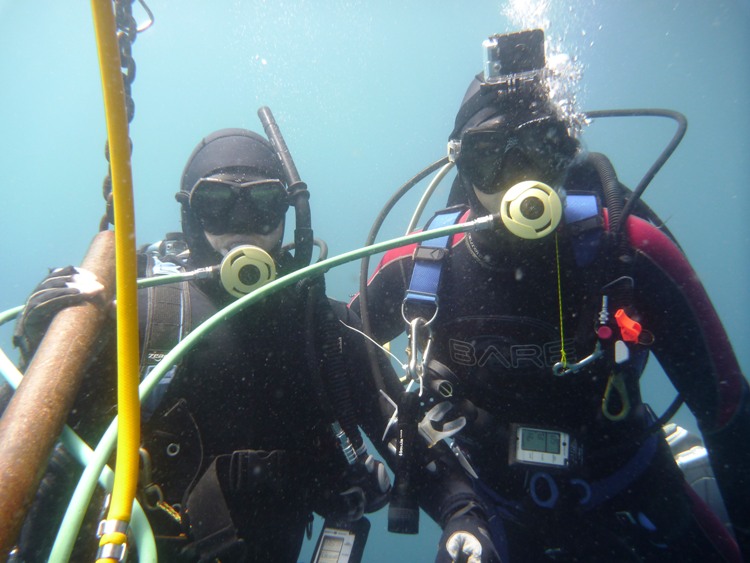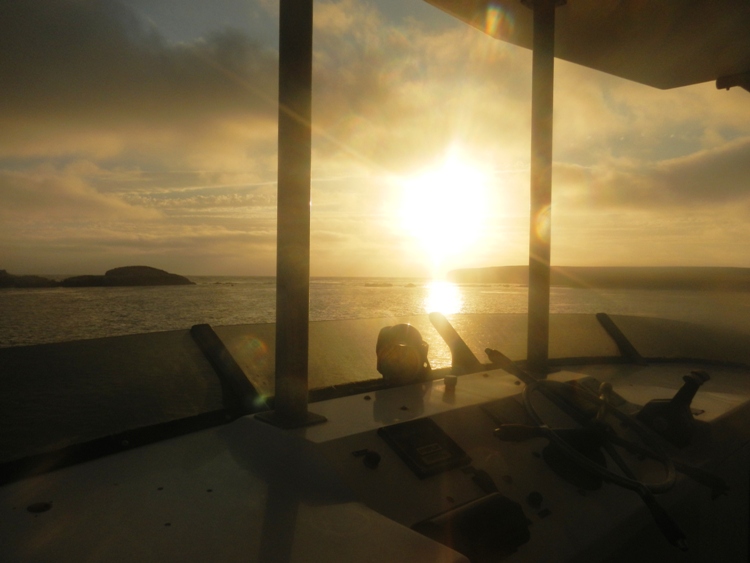For the last four years, I have lived in plain sight of Channel Islands National Park, which consists of five islands and their surrounding waters off the coast of Southern California. As a UCLA student who loves surfing, I’d often lazily look over to this group of distant mounds on the horizon as I waited for the next set of waves to roll in. I never visited the islands prior to this internship, so they were actually little more than a nuisance to me because of their tendency to block swells from reaching the mainland surf spots! After finally receiving this much-anticipated opportunity to visit the park, I now can’t believe that I didn’t make every possible effort to do so earlier! The Channel Islands amazed me at every step of my week-long trip as I saw a precious example of the unspoiled beaches, native wildlife, and peaceful solitude that all of California once offered.
After landing in Los Angeles from Eugene, Oregon, I hopped a shuttle up to Ventura Harbor, where the Park Headquarters and Visitor Center are located. Even the shuttle ride to the park was beautiful! Travelling up the Pacific Coast Highway, nestled between the beaches and mountains of the California coast, was the perfect way to build anticipation for the upcoming week of diving. Upon arrival I met David Kushner, a marine biologist who runs the Kelp Forest Monitoring (KFM) program in the Channel Islands. He showed me to the Sea Ranger II, the park’s live-aboard research vessel that we’d be calling home for the week. I unloaded my dive gear and spent a restful night sleeping aboard the boat.
I met the rest of the crew as they eagerly arrived in the morning. I could instantly tell that I was about to have an incredible week by the way that the crew was happily preparing for the trip – it says great things about a park and its employees when they energetically haul heavy SCUBA gear at sunrise! The crew consisted of David, boat Captain Keith Duran, Park Dive Officer/biological technician Kelly Moore, biological technicians Joshua Sprague, Jonathan Centoni, and Stacie Fejtek, and Student Conservation Association interns Michael Civiello and Sarah Carter. We all quickly organized our gear and headed out into the Pacific.
Everybody on the boat shared the same mission – to accurately take a scientific snapshot of the diverse marine life that inhabits the park. For thirty years, the KFM program has continuously monitored the Channel Islands through an assortment of surveying protocols and lots of dedicated divers. As these snapshots from individual trips are compiled and put into the context of the last 30 years, the KFM team can begin to truly understand trends within a complex ecosystem. Important patterns can be difficult to detect using infrequent or short-term monitoring, which is one of the many reasons why the long-term data produced by the KFM team is especially important – imagine using a flipbook versus a single picture to make a conservation decision!
The establishment of this type of program was actually mandated by congress in the early 1980s, as legislation explicitly required the assessment of population dynamics and ecosystems trends. This is quite a daunting task considering the overwhelming diversity and abundance of life found in the Channel Islands. Every member of the crew was an expert on fish, invertebrate, and algae identification, capable of using the most subtle detail of almost any organism to identify its exact species. The breadth of their ID skills was one of the most impressive aspects of the whole trip! I was able to learn so many new species this trip since the whole team was happy to share their knowledge with me.
The diving in the Channel Islands was absolutely phenomenal. Apparently we really lucked out with the diving conditions, as team members were claiming that the visibility was the best it has been in over a year. On my very first dive, I saw more fish than I saw in the last year combined! On that dive, I accompanied a pair of divers who were surveying fish populations by completing Roving Fish Counts, which requires divers to count every fish they see for 30 minutes while swimming along a 100 meter transect line. A gigantic school of Pacific mackerel at least 50 meters long passed us, leaving me grinning, and the fish-counters scrambling to assess such a large group of fish. They estimated the school at over 6,000 fish!
I often helped out with another survey method which utilized Artificial Recruitment Modules (ARMs) to assess recently-settled marine life in an area. The ARMs are made of compact stacks of small cement blocks, allowing organisms to make homes within the cracks of the structure. On each dive, I would disassemble a stack of blocks, collect target study organisms (including sea urchins, certain sea stars, and other invertebrates), and bring them back to the boat for measurement. On one dive, I uncovered a tiny octopus that let me know how unhappy it was at my intrusion by squirting ink into the water column and quickly swimming away! Overall, I saw a rich assortment of life underwater including large fish, sea lions, and tons of invertebrates. I was really interested to see a group of tiny, open-ocean Pacific pompano, which were living within the tentacles of a pelagic jellyfish that was stuck on a sea urchin. From the boat, we saw massive Northern elephant seals (which can grow to be over two tons!), dolphins, and huge colonies of seabirds.
Since there was so much work to be done (which I think is a good thing – it means that there is lots of life!), we typically rose at sunrise and completed four long dives a day. There was much to be done topside as well, as data was thoroughly reviewed for potential mistakes and organisms collected from ARMs were rapidly measured as a team. The whole team happily eats, sleeps, and breathes monitoring during these week-long trips; every single morning, divers awoke eager to get into the water and every evening, the team excitedly discussed the unusual sightings and unexpected patterns of the day.
I still can’t believe that one of my favorite places in the entire country was just a boat ride away from my home for four years! I’m so happy that I was able to finally experience this national treasure, but I’m not alone in this regrettable oversight; over 18 million people live within 200 miles of the park. I can’t offer a strong enough recommendation for everybody to responsibly visit or support this park, as it is a truly unique time capsule of a more pristine California. I also can’t offer enough thanks to David and the entire KFM team for warmly letting me learn from them and experience this park! Additional thanks to Kelly Moore for taking all underwater pictures that you see here!
